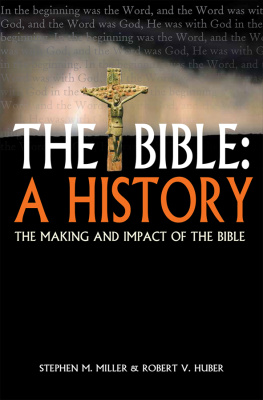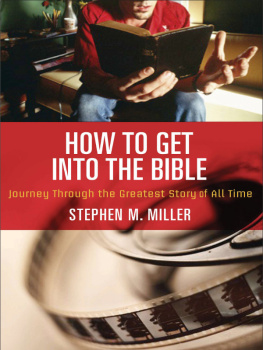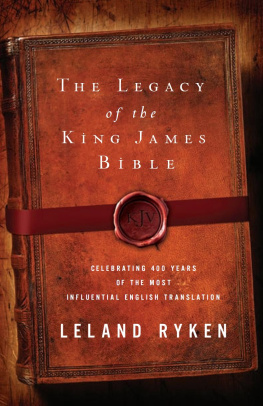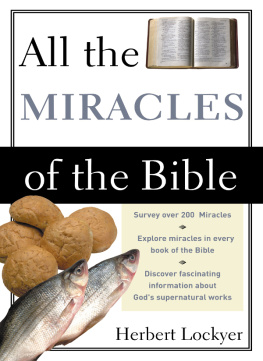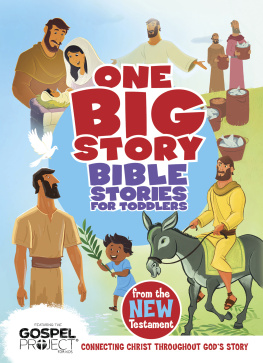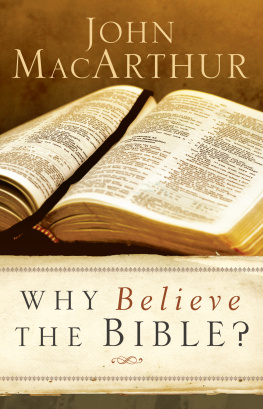

Text copyright 2003, 2015 Stephen M. Miller and Robert V. Huber
This edition copyright 2015 Lion Hudson
The right of Stephen M. Miller and Robert V. Huber to be identified as the author of this work has been asserted by them in accordance with the Copyright, Designs and Patents Act 1988.
All rights reserved. No part of this publication may be reproduced or transmitted in any form or by any means, electronic or mechanical, including photocopy, recording, or any information storage and retrieval system, without permission in writing from the publisher.
Published by Lion Books
an imprint of
Lion Hudson plc
Wilkinson House, Jordan Hill Road,
Oxford OX2 8DR, England
www.lionhudson.com/lion
ISBN 978 0 7459 7032 5
e-ISBN 978 0 7459 7033 2
First edition 2015
Acknowledgments
Unless otherwise indicated, the scripture quotations contained herein are from The New Revised Standard Version of the Bible, Anglicized Edition, copyright 1989, 1995 by the Division of Christian Education of the National Council of the Churches of Christ in the United States of America, and are used by permission. All rights reserved.
Extracts from the Authorized Version of the Bible (The King James Bible), the rights in which are vested in the Crown, are reproduced by permission of the Crowns Patentee, Cambridge University Press.
The Message by Eugene H. Peterson is copyright 1993, 1994, 1995, 1996, 2000. Used by permission of NavPress Publishing Group. All rights reserved.
Excerpts from the New American Bible with Revised New Testament 1986, 1970 Confraternity of Christian Doctrine, Washington, dc, and are used by permission of the copyright owner. All rights reserved. No part of the New American Bible may be reproduced in any form without permission in writing from the copyright owner. Scriptures taken from the New American Standard Bible are copyright 1960, 1962, 1963, 1968, 1971, 1972, 1973, 1975, 1977, 1995 by The Lockman Foundation. Used by permission.
Scripture quotations taken from the Holy Bible, New International Version, are copyright 1973, 1978, 1984 by International Bible Society. Used by permission of Hodder & Stoughton Limited. All rights reserved. NIV is a registered trademark of International Bible Society. UK trademark number 1448790.
Scripture quotations marked New King James Version are copyright 1982 by Thomas Nelson, Inc. Used by permission. All rights reserved.
Scripture quotations marked New Living Translation are taken from the Holy Bible, New Living Translation, copyright 1996. Used by permission of Tyndale House Publishers, Inc., Wheaton, IL 60189, USA. All rights reserved.
p. 313: Extract taken from Canto XXIII of Inferno from Divine Comedy by Dante Alighieri, translated by Steve Ellis. Published by Vintage, 1995. Translation copyright 1994 Steve Ellis.
A catalogue record for this book is available from the British Library
Cover image akg-images
Contents
Introducing the Old Testament &
Introducing the New Testament
John Drane
John Dranes Introducing the Old Testament and Introducing the New Testament have long been recognised as the most authoritative and accessible surveys of the Bible's two testaments, both for students and general readers.
Continuously in print for more than a quarter of a century, they have twice been thoroughly revised to take account of the latest scholarship and recent archaeological findings. Now illustrated throughout in full colour, each contains more than 100 colour photographs, charts, maps, and diagrams ensure that these comprehensive books will be even more useful to an audience interested in the key texts of the worlds most popular religion.

Introducing the Old Testament
ISBN: 978-0-7459-5503-2
Introducing the New Testament
ISBN: 978-0-7459-5504-9
The Lion Concise Atlas of Bible History
Paul Lawrence, edited by Richard Johnson
This handy-sized flexiback atlas of Bible history and places provides a comprehensive guide to the world of the Bible. Starting from the dawn of time, it traces the story of Bible history, from Abraham to Paul. Packed with absorbing information, in a comprehensive spread by spread approach, this volume has everything you need to know to open up the world of the Bible and its people time charts, diagrams, maps and photographs. It offers a superb introduction to the Bibles history, geography and archaeology, in an accessible and user-friendly way.
The Atlas traces the unfolding of the major events in the Old and New Testaments and draws on the latest findings of historians and archaeologists to cover the background. It is lavishly illustrated throughout, with maps, panoramic reconstructions, site plans and photographs, and contains special features on topics of particular interest, as well as chronological charts, a bibliography, gazetteer, glossary and main index.

The Lion Concise Atlas of Bible History
ISBN: 978-0-7459-5532-2
The World of the Bible
John Drane
The World of the Bible is a fascinating insight into the background of the Bible the worlds of Israel, Egypt, Babylon, Persia, Assyria, Greece, and Rome. In-depth research and superb writing combine to make this an essential book for anyone who wants to fully understand the context of the biblical narrative.
In this splendid book, John Drane provides an unparalleled survey of the many different worlds, which helped to forge the pages of the Bible. He ranges over thousands of years from the earliest hunter-gatherers to the Roman world in Jesus day. Areas covered include courtly and military structures, home life, social and economic relationships and ritual and cultural practices. This book will enable the reader to approach the Bible with fresh insight, understanding and appreciation.
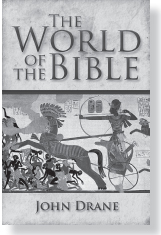
The World of the Bible
ISBN: 978-0-7459-5645-9
By Word of Mouth
In the beginning there was no written word. There was only the spoken word, and as it was later to be recorded in the book of Genesis God created the universe by speaking words into the void. Gods earliest worshippers could not write down their thoughts about God or their experiences of God, but they could speak them, and speak them they did. Long before they invented their own writing system, and even long afterwards, Hebrews told and retold stories, many of which were later to appear in the Bible.
Clinging to beliefs
At first, fathers and mothers probably told their children stories about their own parents and grandparents. Abraham himself must have engaged in such storytelling. When he was called by the Lord to leave Ur and move to Canaan, Abraham must have wanted to preserve memories of his old life and to convince his family and new neighbours that the Lord was the one true God and that the many gods being worshipped by the people around them were lifeless idols. Abraham probably repeated stories of how the Lord created the universe and saved Noah and his family from the flood. He must have told of his own calling, repeating Gods promise to make him the father of a great nation. Later, his son and grandson, Isaac and Jacob, would have continued the tradition, adding their own stories. When their descendants were forced by famine to move to Egypt, where they later became slaves, they would have had even more reason to preserve their heritage, clinging to their beliefs in order to endure.
Next page
